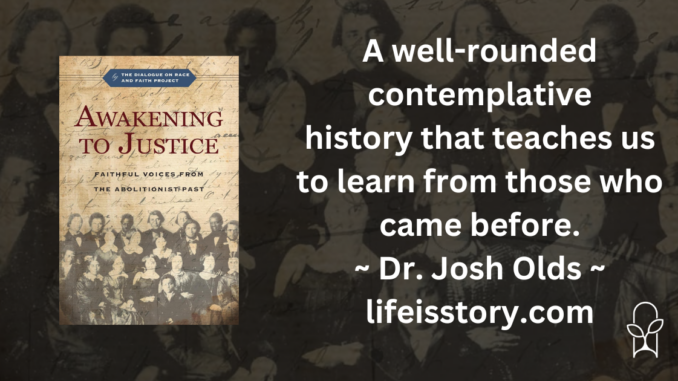
Also by this author: How to Fight Racism: Courageous Christianity and the Journey Toward Racial Justice, How to Fight Racism Young Reader's Edition: A Guide to Standing Up for Racial Justice
Published by InterVarsity Press on March 26, 2024
Genres: Non-Fiction, Racial Reconciliation
Buy on Amazon
Goodreads

"O where are the sympathies of Christians for the slave and where are their exertions for their liberation? . . . It seems as if the church were asleep." David Ingraham, 1839 In 2015, the historian Chris Momany discovered a manuscript that had been forgotten in a storage closet at Adrian College in Michigan. He identified it as the journal of a nineteenth-century Christian abolitionist and missionary, David Ingraham. As Momany and a fellow historian Doug Strong pored over the diary, they realized that studying this document could open new conversations for twenty-first-century Christians to address the reality of racism today. They invited a multiracial team of fourteen scholars to join in, thus launching the Dialogue on Race and Faith Project. Awakening to Justice presents the groundbreaking work of these scholars. In addition to reflecting on Ingraham's journal, chapters also explore the life and writings of two of Ingraham's Black colleagues, James Bradley and Nancy Prince. Appendixes feature writings by all three abolitionists so readers can engage the primary sources directly. Through considering connections between the revivalist, holiness, and abolitionist movements; the experiences of enslaved and freed people; abolitionists' spiritual practices; various tactics used by abolitionists; and other themes, the authors offer insight and hope for Christians concerned about racial justice. They highlight how Christians associated with Charles Finney's style of revivalism formed intentional, countercultural communities such as Oberlin College to be exemplars of interracial cooperation and equality. Christians have all too often compromised with racism throughout history, but that’s not the whole story. Hearing the prophetic witness of revivalist social justice efforts in the nineteenth century can provide a fresh approach to today's conversations about race and faith in the church.
In 2015, staff members in the alumni office at Adrian College found a box in a supply closet filled with an assortment of objects—newspaper clippings, a photo of a former president of the college, a freshman beanie that dated back to the 1950s, and a journal. The journal seemed significant so Dr. Chris Momany, the college’s chaplain and resident religious historian was brought in to look at it. It was a journal written by the 19th century abolitionist and missionary, David Ingraham, and the history it contained included valuable insight into the abolitionist movement. The authors of Awakening to Justice believe that the study of revivalist social justice efforts in the 19th century can help us approach reconciliation efforts today. This book is their attempt to do so.
Awakening to Justice is a unique project. The authors—Jemar Tisby, Douglas Strong, Christopher Momany, Segbegnon Matieu Gnonhossou, David Daniels III, R. Matthew Sigler, Diane Leclerc, Esther Chung-Kim, Albert Miller, and Estrelda Alexander—are all part of the Dialogue on Race and Faith. When Ingraham’s journal was brought to their attention by Momany, the group decided to study the journal and pen their reflections on it. Each chapter presents a different facet of the saga that unfolds through the journal, which is focused on the three individuals in the 1830s and their abolitionist efforts.
Chapter one, written by Momany, offers a composite biography of the three figures—David Ingraham and his friends James Bradley and Nancy Prince. The next chapter focuses on the trio’s primary abolitionist efforts as revealed in the book, namely justice for the 556 people kidnapped into slavery aboard the Ulysses. As the work progresses, each author takes on a different part of the story, drawing a connective tissue between the work of the 1830s and present-day efforts almost two hundred years later.
Altogether, Awakening to Justice offers a well-rounded contemplative history. I do wonder how the book might have been different had it been written by a single voice—not that the collaborative style is bad, but I do wonder how it would have affected the end product. This is a book of history, but it is not a history book. Rather, it is the musings of a group of activists who have studied this particular part of the past and used what they’ve learned to affect their own praxes—and now offer what they’ve learned to others as well. It’s a reminder that history matters. This isn’t just all in the past. It still has value for today. We can learn from those who came before us, because it is by standing on their shoulders that we can see a better future with greater clarity.
